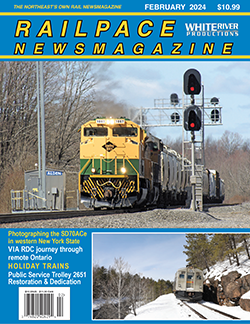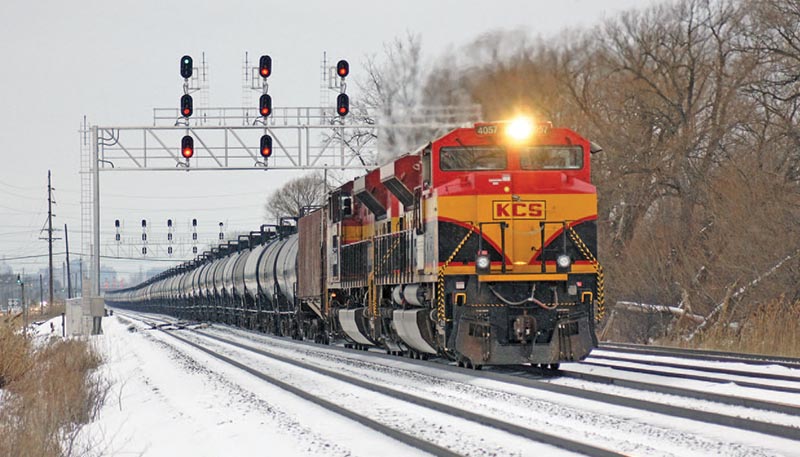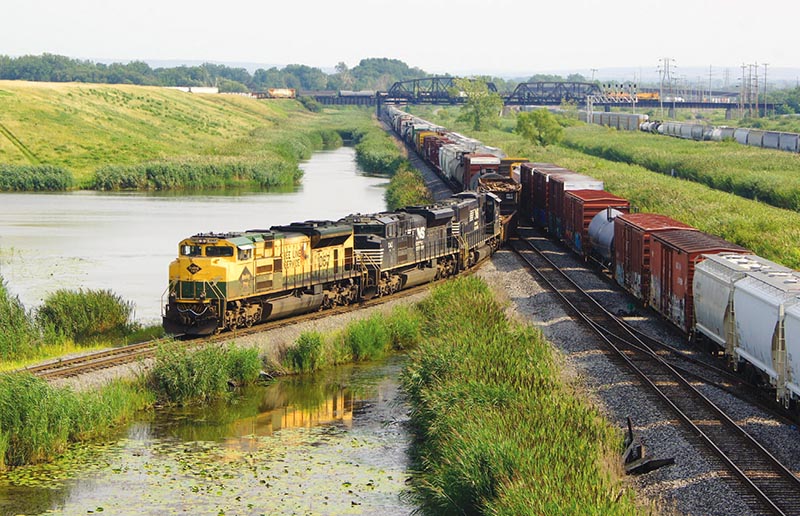 by Gregory E. Dziomba/photos by the author
by Gregory E. Dziomba/photos by the author
Today’s Class One railroads are dominated by General Electric (GE) locomotives. This was not the case during the second half of the 20th century, when photographers enjoyed a market overshadowed with contributions from Electro-Motive Division (EMD). The transition occurred prior to the 21st century, when General Electric made substantial reliability and fuel efficiency improvements, along with lower unit cost and better financing options. The once-proud and dominant EMD supplier was struggling financially to compete in the current market.
It has become a challenge for today’s railroad photographer to capture modern representatives from EMD. On Class 1 railroads, this is primarily the SD70ACe or “ACE.” The “ACe” designation designates AC traction with enhanced EPA emission levels.

ABOVE: A pair of Kansas City Southern “Belles”, 4057/4126, visit western New York on CSX Ethanol K632, passing through Forks (Cheektowaga) on the former New York Central mainline, headed east toward Rochester on March 13, 2022.
The SD70ACe was introduced in 2005, partly inspired by Conrail’s SD80MAC units. It was the last-produced diesel locomotive by EMD at its LaGrange, Ill., and London, Ont., plants (under the ownership of General Motors), while being the first locomotive built under Caterpillar/Progress Rail, after their acquisition of EMD in 2010.
The SD70ACe locomotives, equipped with their distinct Nathan K5LLA Air Chime horns, gained further popularity through various “Heritage Units” commissioned by Union Pacific in 2005 and Norfolk Southern in 2012, both commemorating the acquisition of former railroads. Many of these units can be spotted across the country, but this requires a lot of patience, along with scanner and internet monitoring…


